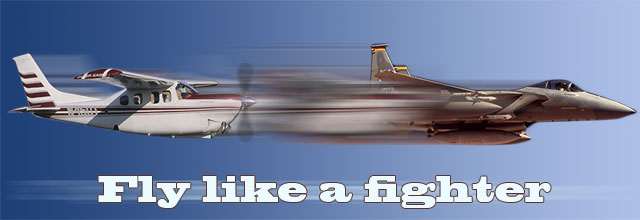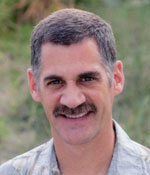
As part of the Air Force’s primary training syllabus I went through in the T-37, we did quite a few spins. Even though none of the non-trainer aircraft in the Air Force inventory were certified for spins, they wanted us to experience spin entries and recoveries before we earned our wings.
 Entering a spin requires two ingredients—stall and yaw. With this simple knowledge, we practiced entering many different types of spins: left and right, turning entries and wings level, power on and off, and accelerated and unaccelerated.
Entering a spin requires two ingredients—stall and yaw. With this simple knowledge, we practiced entering many different types of spins: left and right, turning entries and wings level, power on and off, and accelerated and unaccelerated.
The Air Force taught two basic recoveries: the "spin prevent" and a full spin recovery complete with boldface steps to follow. For the spin prevent, we did a spin entry—stall the aircraft, then apply full rudder to get the yaw started—and then applied steadily increasing forward pitch and opposite rudder to stop the spin before it fully developed. If that didn’t work, or we intended to recover from a fully developed spin, then we applied the six-step single spin recovery checklist. In part, this process required an abrupt application of full opposite rudder and full forward stick. Once the spin stopped, and while still holding full forward stick, we would be graced with a windscreen of nothing but ground as the jet pitched down to a nearly vertical attitude. The last step of the checklist was to recover from the dive.
The first few spins I rode through were both exciting and nerve wracking at the same time. Once my brain got used to the outward centrifugal forces and the view of the rapidly spinning horizon, and especially once I got to do the flying, I really enjoyed that part of my training. Not only was it a thrill, but it was a huge confidence builder to know I could fly the jet into and out of that aerodynamic regime.
On my last flight review in my Cessna P210 I was performing a stall series. Setting up for a power-on stall, I had the power set well below cruise but needed 25 degrees of pitch to get the airplane to slow down. I was holding right rudder for coordinated flight, and when it finally stalled I executed a stall recovery by adding power and relaxing back pressure. What happened next caught me—and my CFI—by surprise: The nose dropped and the airplane started an abrupt yaw, just like a spin entry.
I didn’t even have to think: Muscle memory immediately took over as I simultaneously reduced power and applied forward pressure and opposite rudder. Just as quickly as the yaw started, it was stopped and we were flying again. I’m not exactly sure what happened, but between the power changes for the stall entry and recovery I must have messed up with my feet and not kept the rudder inputs in sync with the power and angle of attack changes.
As we know, the FAA requires demonstrated proficiency in spin entry, spins, and spin recovery techniques for flight instructor applicants only. The rest of the flying world is trained on avoiding spins in the first place, with an emphasis on the traffic pattern and avoiding distractions in the cockpit. I don’t foresee this changing anytime soon—but that doesn’t mean that you aren’t allowed to receive spin training on your own. My “simple” power-on stall got really exciting, but then turned into a nonevent because of the training I had received. Is it time for you to get some spin training?
Larry Brown of Colorado Springs, Colorado, is a retired Air Force F-15 pilot who is using the lessons he learned as a fighter pilot as a GA pilot in his Cessna P210. Brown, who has 2,900 hours total time during his 35 years of flying, also was an instructor pilot and flight examiner in the Air Force T-38 and instructor pilot in the T-52, the military’s version of GA’s Diamond DA40. See previous installments of “Fly like a fighter.”



